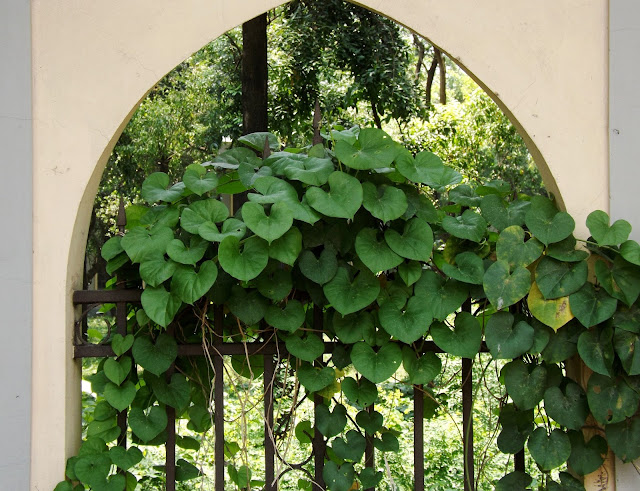Ghetkochu, Bengal Arum, Typhonium trilobatum
Ghetkochu or Bengal Arum (Typhonium trilobatum, family: Araceae) is a soft, tuberous herb, attaining a height of 25-40 cm, found here and there in the country. it is found growing in damp or wet places, fallow lands and beside the paths. Though it is not a popular vegetable in the country, but people from different parts of the country consume its leaves, stalks and tubers. Apart from Bangladesh or Greater Bengal, India, Sri Lanka, Nepal, Southeast China, North Malaysia are the original habitat of the plant. It is naturalized in the Philippines, West Borneo, Singapore, West Africa and tropical America.
Other names : Ghatkol, Ghetkol, Kharkol, Kharkeli, Ghekul, Kharkun, Chamghash, (Bangla); Harbaz (Chakma); Mohras (Marmara); Harbait (Tanchangya).
Ghetkochu is quite beautiful to look at—especially the shape of its leaves. Like other members of the Kachu (Arum) family, it has fewer leaves, mostly 5 to 6. Its leaves, however, vary—from arrow-shaped to 3-lobed; 5 lobes can also be seen occasionally. From a distance it appears to be three separate leaves. These are irregularly heart-shaped at the base, slightly pointed towards the apex. The leaf petiole is quite long, up to 25-40 cm, green in color, but sometimes reddish-purple.
As mentioned earlier, its leaves and buds, tubers are eaten as a tasty vegetable. Its tubers, stems and leaves are used medicinally. Roots and tubers are stimulants. The tuber has a bitter taste. The plant is used elsewhere as a poultice for bites of poisonous snakes, bees, wasps, and for hard boils. Tuber curry taken with rice clears bowels, reduces bleeding.







Beautiful
ReplyDelete\\\\\\\\\\\\\\\\\\\\\\\\\\\\\\\\\\\
ReplyDelete///////////////////////////////////////////////////////////
ReplyDelete\\\\\\\\\\\\\\\\\\\\\\\\\\\\\\\\\\\\\\\\\\\\\\\\\\
ReplyDeleteThanx
ReplyDeleteWhich species of Coon's Tail are commonly found in Bangladesh ?
ReplyDelete